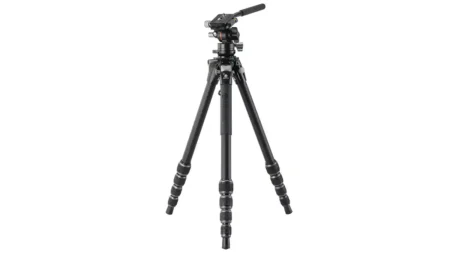Many photographers take their camera’s autofocus (AF) system for granted because it’s very effective in so many situations. But sometimes it might not do exactly what you want it to. And in these situations it helps to know a little more about how your AF system works to be able to use it to its full potential. Or if nothing else, at least understand what the problem is.
01 Fast isn’t always best
When new cameras are launched the manufacturers love to talk about how their new AF system is the world’s fastest, and we naturally assume that an autofocus system that can make adjustments rapidly is best. But is it?
Not always. That’s why some high-end cameras – such as Canon’s EOS 5D line – let you vary the speed at which your camera responds to a change in your subject’s distance.
Why would you want to do this? Consider a sports photographer at the Olympics. Imagine you’re shooting a swimming competition and focusing on Michael Phelps, in particular, as he swims towards you.
If your autofocus system is set or designed to respond very quickly to a change in subject distance, what will happen is that you may focus on Michael Phelps’ face, but as he disappears underwater your camera will then lock focus on the far end of the pool.
When he resurfaces, your camera will have to refocus yet again, potentially wasting time and missing a dramatic moment.
A camera that responds more slowly won’t react to the sudden change in subject distance and will only need to make a small adjustment when Phelps re-emerges.
02 Metering is linked to your AF point
Many cameras link the metering system to the active AF point, whether it’s the general purpose multiple zone, Evaulative or Matrix metering mode that you’re using.
This means that how bright your subject is under this active AF point will have a big impact on your exposure.
To ensure you get an even exposure, it’s often worth switching to manual exposure mode and using your spot meter if your subject is much brighter or darer than the rest of your scene.
03 Operational aperture
Camera companies often list the aperture at which a camera’s AF system can operate. Most modern AF systems can operate at f/8, for instance.
What this means is your lens’s maximum aperture. Modern cameras focus with the lens aperture wide open, and it only closes down once focusing has taken place and just before the actual exposure is made.
Therefore you can shoot with an aperture of f/16 on a camera that has an AF system that operates down to f/8, f/5.6 or wider.
Manufacturers like to talk about this f/8 compatibility because it means the autofocus system will function even when a photographer is using long telephoto lens with teleconverters, which reduce the maximum aperture.
04 Your AF system thinks the subject is near the centre and may give faces priority
Many beginner photographers let their camera decide where the AF point should be, and most of the time this is fine. Cameras are quite clever.
However, your camera assumes your subject is close to the centre of the frame – which it typically is – so if you are shooting something you’ve framed off-centre you might run into problems if you leave it up to the camera entirely.
and often the closest object to the camera. If this isn’t the case the camera may focus on the wrong point in the scene.
Thankfully most cameras allow you to set the AF point yourself, you just need to set it to the right mode. This mode has a wide variety of names including both Single and Multiple point, depending upon the manufacturer.
However, your camera’s manual will explain which option you need. Once it’s selected it’s usually necessary to press a button to enter AF point selection mode and then use the navigation keys to activate the point that you want. In some cases, however, you may be able to set the AF point directly using the navigation keys or a dedicated controller.
Alternatively, cameras with a touchscreen usually allow you set the AF point with a touch of your finger on the screen.
Also, some cameras with Face detection AF mode will override your AF point selection if it sees a face in the scene. This can potentially spoil an image if that face wasn’t your intended focal point. To keep this from happening you need to deactivate Face Detection mode to ensure the correct part of the scene is sharp.
05 Linear and cross-type AF points
DSLR cameras employ phase detection AF systems which use two types of AF points: linear and cross-type. Linear is the standard type and these will search across their given line within the frame for differences in contrast.
Cross-type are the more sensitive AF points. These will search for contrast differences both vertically and horizontally. There are typically fewer cross-type points than linear. Some cameras only offer one, which is situated in the centre of the frame.
Other cameras offer more cross-type points, so it’s worth researching this before you buy. It’ s a small item on a camera’s spec sheet but can make all the difference in the field.
Some high-end cameras also boast a double cross-type AF point at the centre of the frame. However, this extra sensitive AF point is typically active only when you’re using fast lenses with a maximum aperture of at least f/2.8.
06 Contrast detection needs a clean signal
In recent years we’ve seen a huge improvement in the AF systems in mirrorless cameras, and the reason for this is because new sensor technology is better able to control image noise
Because compact system cameras use data from the image sensor to focus on your subject , the strength of the signal relative to the noise signal is very important to the performance of your autofocus system.
Therefore, the advances we’ve seen by CSCs to control image noise has allowed autofocus systems to improve in kind.


